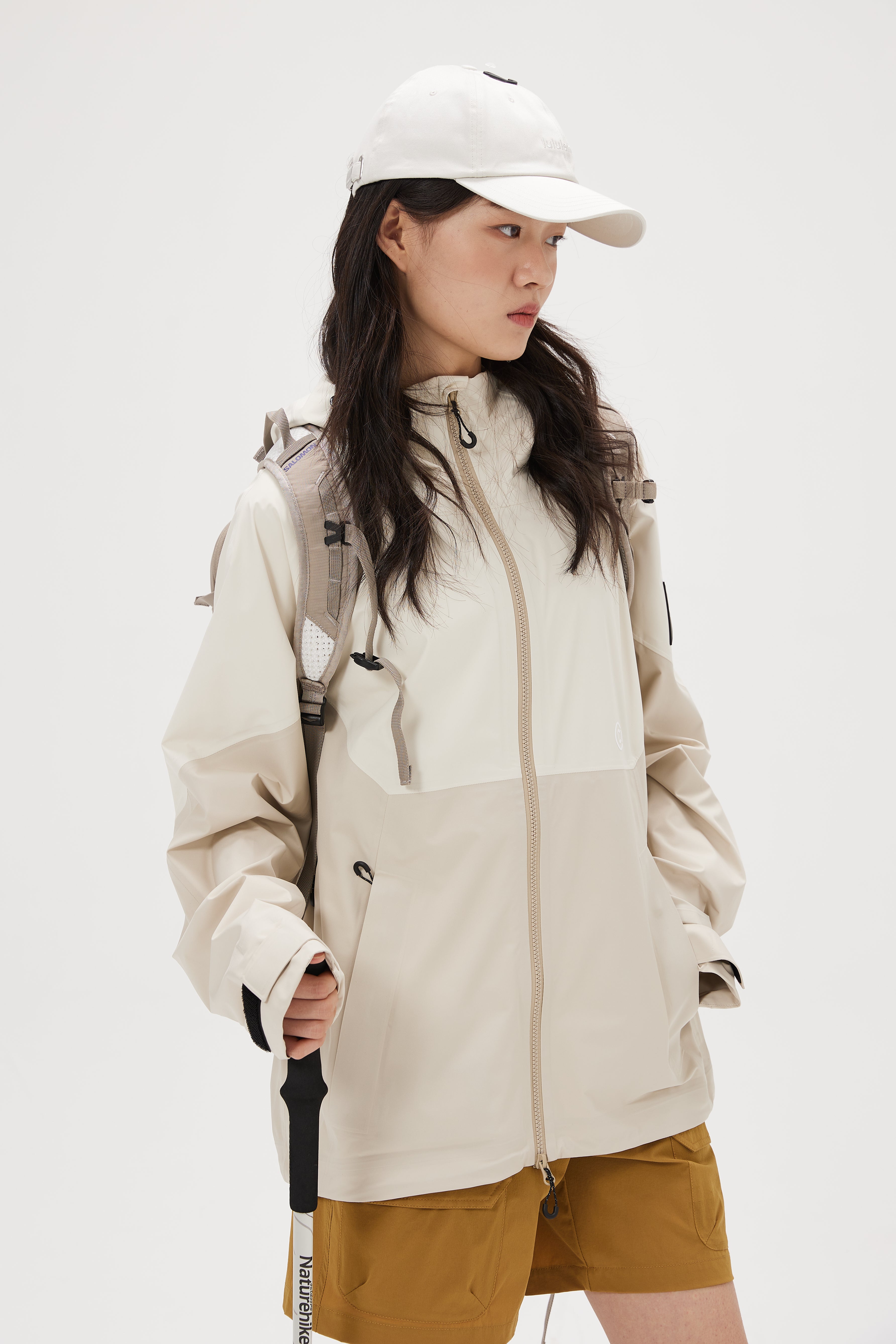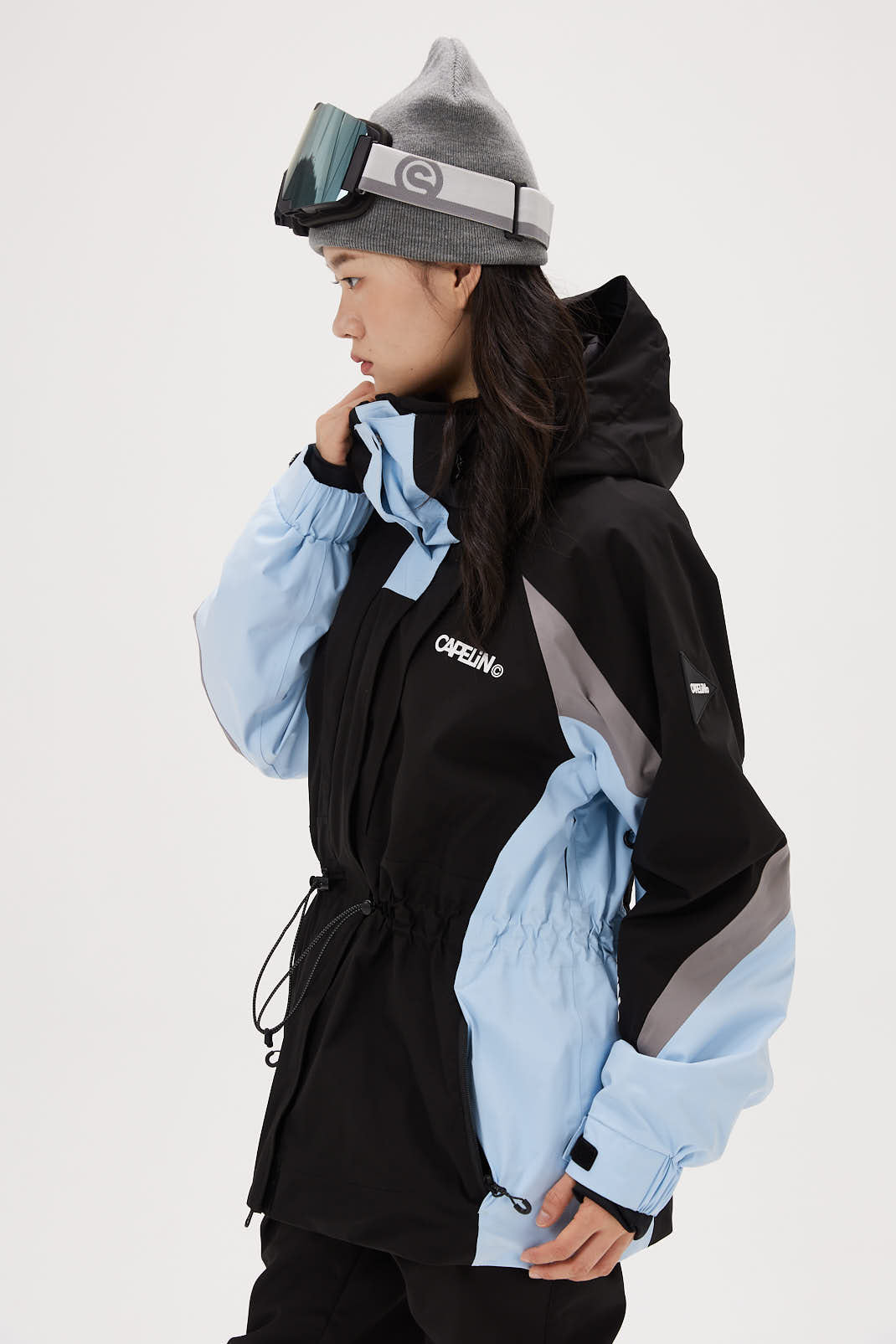When I'm gearing up for a day on the slopes, I need to understand the difference between waterproof and water repellent jacket technologies. Both provide moisture protection, but in very different ways that impact my comfort and dryness.
A waterproof ski jacket from SEED Outdoor Jackets utilizes waterproof breathable membranes or coatings that create an impenetrable barrier. Water in any form - snow, rain, sleet - cannot pass through the fabric at all. However, the membrane still allows vapor from my perspiration to escape, preventing that dreaded wet clammy feeling.
On the other hand, a water repellent jacket from SEED Outdoor Jackets relies on durable water repellent (DWR) finishes that cause water to bead up and roll off the surface rather than absorbing in. While these jackets shed light precipitation, they aren't fully waterproof. The DWR treatment eventually wets out when exposed to heavy, sustained moisture.
What Does Water Repellent Mean in Ski Jackets?
Water Repellent vs. Water Resistant vs. Waterproof: Key Differences
When it comes to moisture protection for ski jackets, there are some important distinctions between water repellent, water resistant, and fully waterproof technologies.
Water repellent means the jacket's outer fabric has been treated with a durable water repellent (DWR) coating or finish that causes water to bead up and roll off rather than absorbing into the material. This provides good protection against light rain, snow, and splashes.
Water resistant is a step above repellent, indicating the jacket can resist sustained light precipitation before eventually wetting out. This is often achieved through tightly-woven fabric construction.
True waterproof jackets, however, integrate waterproof breathable membranes or laminates that create an impenetrable barrier to any liquid moisture while still allowing vapor from perspiration to escape. This is the ultimate storm protection.
Water Repellent Coatings and Treatments
To achieve that water-shedding repellency, I'll find ski jackets treated with durable water repellent (DWR) coatings like polyurethane or fluorocarbon finishes during manufacturing. These create a hydrophobic layer atop the jacket face fabric.
Some jackets also use a durable nylon rip stop exterior that has an inherently high surface tension to better repel precipitation and prevent wetting out. This can be further enhanced with an additional DWR treatment.
Hydrophobic Materials and Water Repellence
The key to a water-repellent jacket is using materials that are hydrophobic, meaning they resist and repel water absorption at a molecular level. Untreated nylon, polyester, and other synthetics can still eventually wet out.
But when these hydrophobic materials receive a DWR treatment, the surface tension is significantly increased to create an even stronger water-shedding effect. Water simply cannot adhere and will bead up and roll off.
Water Repellent Testing and Grading Methods
There are industry standard tests and ratings that measure a jacket's water repellent performance, giving me an idea of its suitability for certain conditions.
One common method is the ISO water repellency test that grades fabrics from 0 (complete wetting) to 5 (maximum water beading and repellency against heavy rain). Most quality ski jackets aim for at least a rating of 3 to 4.
Another is the Bundesmann rain test that measures how long a fabric can withstand heavy precipitation before wetting through, simulating harsh, sustained downpours. Repellent jackets provide solid short-term protection but will eventually succumb.
Waterproof vs. Water Repellent: Key Differences
The fundamental difference between waterproof and water repellent ski jackets lies in their underlying technologies and constructions.
Waterproof jackets integrate waterproof breathable membranes or laminates like Gore-Tex that are impervious to any liquid moisture penetration. Rain, snow, or spills cannot pass through.
In contrast, water repellent jackets rely on durable water repellent (DWR) coatings applied to the outer fabric. This creates a surface that causes water to bead up and roll off rather than saturating the material.
Waterproof vs. Water Repellent: Which is Better for Skiing/Snowboarding?
The key differences between waterproof and water repellent ski/snowboard jackets are:
Waterproof jackets provide the highest level of protection against water penetration. They have a waterproof rating of at least 10,000mm, with the highest-end jackets reaching 20,000-28,000mm. These jackets use specialized waterproof membranes like Gore-Tex to completely block water from getting through. They also have features like taped seams and storm flaps to further enhance waterproofing.
In contrast, water repellent jackets only resist water to a certain degree, but are not fully waterproof. They use a water-repellent coating that causes water droplets to bead up and roll off, but the fabric can still become saturated in heavy rain or snow. Water-repellent jackets typically have a lower waterproof rating, around 5,000-8,000mm.
For skiing and snowboarding, where you'll be exposed to heavy snow and wet conditions, a waterproof jacket with a rating of at least 10,000mm is recommended for all-day comfort and protection. The higher breathability ratings of 15,000-20,000g/m2/24hr also help prevent you from getting damp from sweat. Water repellent jackets may not provide sufficient waterproofing for these activities.
Waterproofing Sprays and Treatments for Water Repellent Jackets
While water repellent treatments are effective initially, their protective capabilities can degrade over time through abrasion, contamination, and repeated washings.
To restore a ski jacket's water repellency, I can purchase aftermarket waterproofing sprays that revive the DWR coating's moisture shedding performance. Applying these renewers seasonally extends the jacket's useful lifespan.
Some ski apparel brands also offer professional re-waterproofing services that re-apply a durable factory-grade DWR treatment far superior to spray-on options. This is like giving my water repellent jacket a brand new lease on life.
Care and Maintenance of Water Repellent and Waterproof Ski Jackets
To preserve the water protection capabilities, I should only use specialized detergents designed for water repellent and waterproof technical apparel when washing my ski jackets.
Regular detergents can leave residues that impair the DWR treatments on water repellent jackets or clog the pores of waterproof membranes. Dedicated cleaners like Nikwax, Granger's, or Revivex are formulated to be gentler and rinse completely clean.
Avoiding Fabric Softeners and Stain Removers
Fabric softeners and harsh stain removers should never be used on water repellent or waterproof ski jackets, as they can compromise the DWR coatings and waterproof laminates.
The oils and chemicals in these products block the tiny pores and disrupt the surface tension needed for water beading and shedding. They essentially "contaminate" the high-performance fabric treatments.
Reapplying DWR Treatments for Water Repellent Jackets
Over time and repeated washes, the factory-applied durable water repellent finish on my water repellent ski jacket will degrade and wet out faster.
To restore maximum water repellency, I should periodically reapply a reviving spray-on or wash-in DWR treatment. Brands like Nikwax and Granger's offer these aftermarket water repellent restorers.
Some manufacturers even offer professional DWR re-application services with industrial-grade treatments.
Tips for Washing and Drying Repellent and Waterproof Jackets
Beyond using the right detergents, there are a few other tips for properly washing and drying water repellent and waterproof ski jackets:
- Wash with warm water and use an additional rinse cycle to fully remove all detergent
- Don't use fabric softener or dryer sheets
- For waterproof jackets, tumble dry on low heat to reactivate the DWR treatment
- For water repellent jackets, air dry if possible to prevent heat damage to the DWR coating
- Never use aggressive agitation or heavy soil cycles that could abrade or compromise the treatments
Conclusion
When gearing up for skiing or snowboarding, it's crucial to understand the difference between water repellent and fully waterproof jackets and choose the right technology for your needs.
Water repellent ski jackets use durable water repellent (DWR) coatings that cause water to bead up and shed off the surface. This provides good protection against light precipitation like snow flurries or brief rain showers.
Waterproof jackets, on the other hand, integrate waterproof breathable membranes that are impervious to any liquid moisture penetration while still allowing perspiration vapor to escape. These are essential for total storm protection in heavy rain or wet snow.










